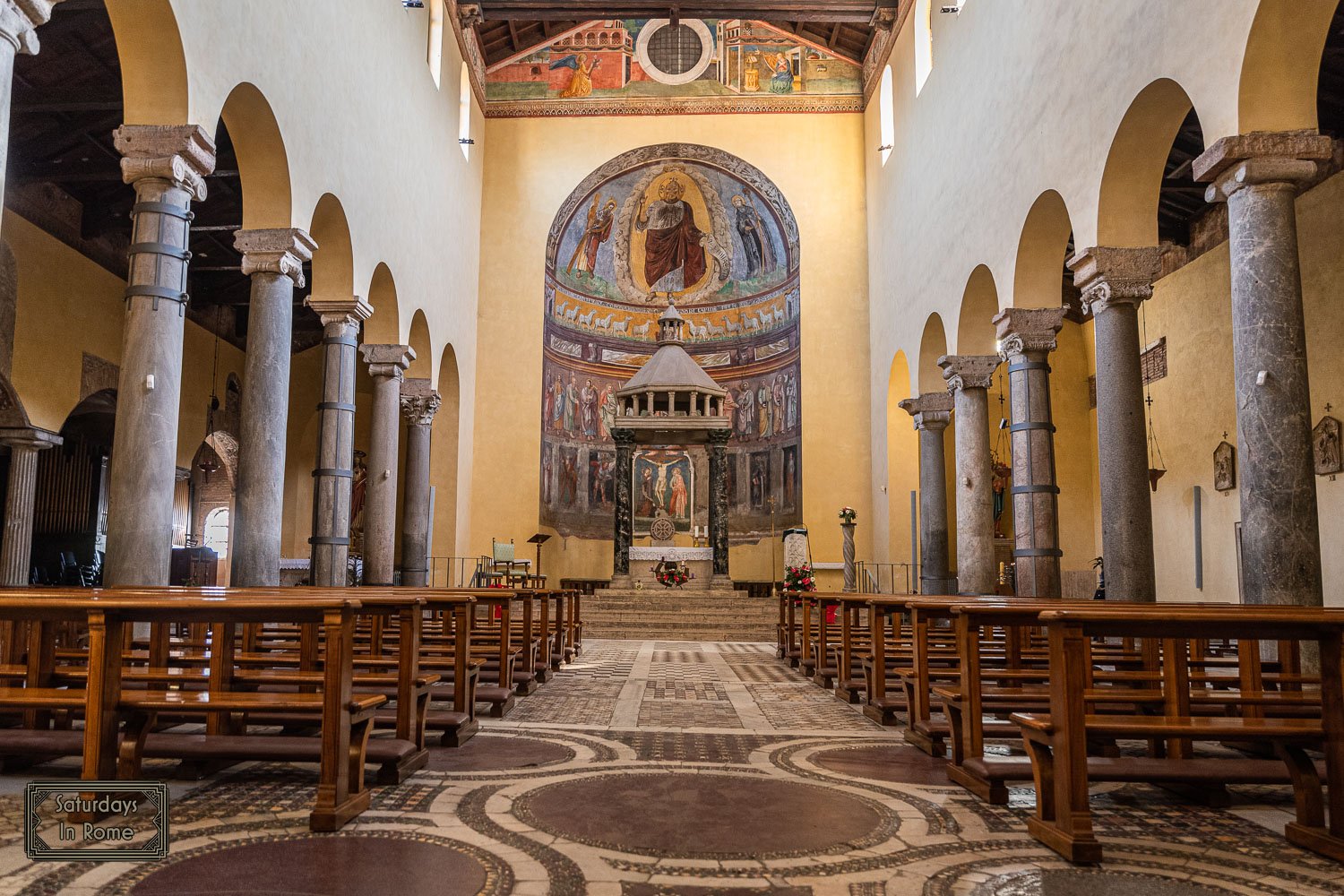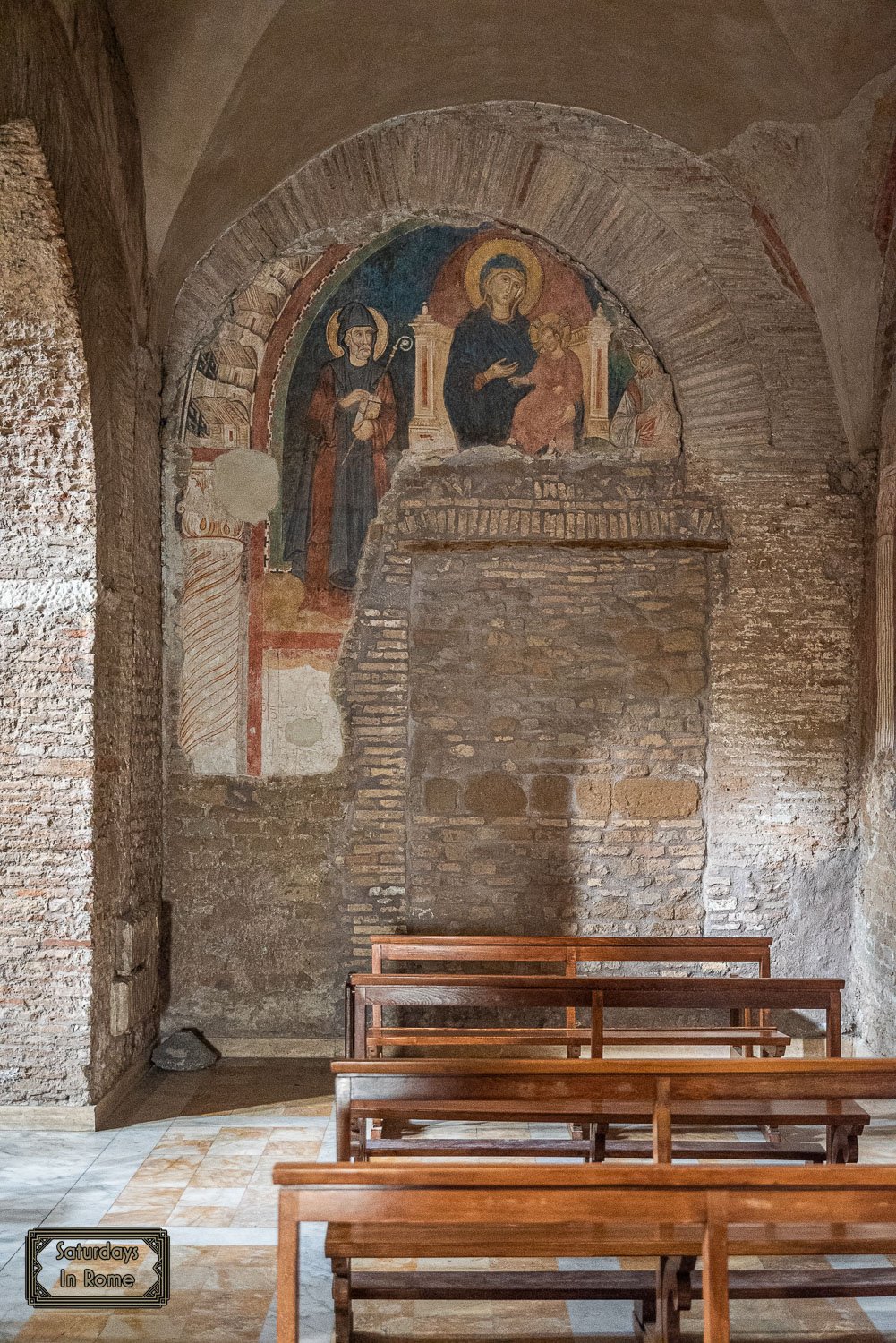San Saba, Rome Is A Jesuit Basilica You Need To Explore
San Saba, Rome is a Jesuit Basilica and the most prominent religious establishment in the area with the district itself named after the Roman Catholic church.
The Basilica Hall
The Basilica of San Saba, Rome was one of the most important monasteries in Rome in the Middle Ages. The building stands on a Roman oratory dedicated to Santa Silvia, mother of Pope Gregory the Great, with origins that date back to around the eighth century when a group of monks from the monastery of San Saba in Judea settled in the area.
Need Help Planning?
- Cheap Flights: Find The Most Affordable Flights.
- Accommodations: From 1 to 5 Stars And More.
- Car Rentals: Affordable Travel Across Italy.
- Sightseeing Tours: Explore Some Amazing Tours.
- Buying An eSIM: Stay Connected In Italy.
This post includes affiliate links.
The History Of The San Saba Catholic Church In Rome
The Monastery of St. Saba originated here in the mid-7th century on the Piccolo Aventino hill, in a house that supposedly belonged to the maternal family of Pope Gregory the Great. It was set up by a group of monks from a middle eastern monastery in Judea, dedicated to St. Saba. However, though a religious establishment seemingly did already exist at the time of Pope Gregory 1st, the earliest recorded documents mentioning the religious complex are from the year 768, when the false Pope Constantine was imprisoned here. Today’s building is the product of major work carried out from 1932 to 1933.
Historical Events Of San Saba Roman Catholic Church
- In the 6th century, according to Giovanni Diacono, Gregory the Great founded the monastery of S. Saba.
- In the 7th century, some Greek inscriptions are found on the roofing tiles of tombs and a fresco fragment is found in the basement of the current church dating back to this period. This is also the time of the Arab conquest of the monastery of S. Saba near Jerusalem, whose escaped monks could have moved to Rome.
- In 787, Adrian I sent the abbot of S. Saba, Pietro, to the second council of Nicaea.
- In the years 795-816 and 828-844, Leo III and Gregory IV donated precious furnishings to the monastery, considered to be the most important in the city.
- In the 10th century, a Benedictine community of Montecassino built the upper church.
- From 1144 until 1145, Pope Lucius II assigned the complex to the Cluniacs, to moralize it after a period of squandering.
- From 1464 until 1471, the commendatory cardinal Francesco Piccolomini undertook extensive restorations.
- From 1503 until 1513, Julius II entrusted the church to the Cistercians.
- From 1513 until 1521, Leo X entrusted the church to the regular canons.
- From 1572 until 1581, Gregory XIII entrusted the church to the Hungarian Germanic College.
- In the Early 20th century, Architects Cannizzaro and Gavini restored the interior of S. Saba to its medieval appearance.
- On December 5th, 1931, the church was erected in the parish and entrusted to the Society of Jesus (a.k.a. the Jesuits).
Fourth Nave – Side Fresco
Roman Catholic Celebrations And Sacred Functions Of San Saba, Rome
The following holidays are celebrated with particular solemnity at the parish Church of San Saba:
- December 5th is the feast of the titular saint, Saint Saba.
- Holy Tuesday celebrates the Lenten station.
- Penultimate Sunday of May is the Feast of the Madonna.
The Architecture Of San Saba Church In Rome
This detailed description was written by Daniela Gallavotti Cavallero, and loosely translated by me and google, which gives more information on the great historical details you will find in this catholic church. Consider printing the map and taking the description with you on your next visit.
Map Of Basilica
Exterior Parts Of The Church
Using the above diagram as a guide, the numbers listed by the descriptions below correspond to the various points numbered on the map:
1. From the 13th century porch, crossing a quadriporticus, one reaches the Façade built in the second half of the 10th century, preceded by a portico with an open gallery above, built in 1463 by Francesco Piccolomini. Cosmatesque portal dated 1205 and signed by Giacomo son of Lorenzo and father of Cosma. Paintings above commissioned by Gregory XIII for the Jubilee of 1575. Under the portico are numerous Roman and early medieval marble finds. Among the latter two notable fragments of figures are:
- Man with tunic and stick
- Knight with falcon.
The Interior Parts Of The Church
2. The Basilica hall has three naves and as many apses, with apse and central nave twice as wide as the side ones. A so-called fourth nave, on the left, is an 11th century porch, closed in the 13th century and annexed to the church. Bases, columns, capitals and pulvinus are bare. Trussed roof of the Piccolomini restorations.
The Right Nave Of The Church
3. Large slabs from the schola cantorum, restored at the beginning of this century integrating the surviving fragments and placed in the central nave. Disassembled in 1943 because it was considered bulky.
Fourth Nave – Back Fresco
Access to the sacristy, where numerous fresco fragments extracted from the primitive oratory below the central nave are kept.
The Presbytery And Choir Loft
5. The High altar, ciborium and episcopal chair were restored at the beginning of the 20th century with material found on site and elsewhere, following the description given by Pompeo Ugonio of the church.
6. The apse had an original mosaic decoration, of which the frescoes of the restoration by Gregory XIII for the Jubilee of 1575 perhaps reproduce the subjects:
- In the basin Christ between Saints Andrew and Saba
- In the presbytery, on superimposed registers, from above: the Theory of lambs leaving Jerusalem and Bethlehem towards the mystical lamb
- The Twelve apostles on either side of the throne with the Virgin and Child. Below from left: Gregory XIII, Saint Andrew, the Archangel Michael, Saint John Baptist, St. Augustine, St. Barbara. Above the chair, a fourteenth-century Crucifixion between the Virgin and St. John. On the tympanum, Annunciation in fresco by an Umbrian master, dated 1463 and part of the Piccolomini restorations.
7. Two steps on either side of the presbytery lead to the semi-circular crypt, with a central arm containing the relics.
The “So-Called” Fourth Nave Of The Church
8. On the walls, 13th century deteriorated frescoes depicting the legend of St. Nicholas of Bari and the three spinsters gifted by him; a pontiff enthroned between two saints; the Virgin enthroned between Saints Andrew and Saba.
Under the church there is an ancient 6th century oratory which can be accessed (with permission) from a staircase under the portico.
9. There is a large worship hall with semicircular apse and with numerous fragments of frescoes still on site. The hall is crossed by a section of wall in opus reticulatum belonging to a pre-existing Roman construction and is occupied by a cemetery of monks, installed in an unspecified period and made up of more or less decorated Roman sarcophagi of reuse, niches with tiled roofs, ossuaries.
Main Hall with Fourth Nave
The Society of Jesus, a.k.a. The Jesuits
The Society of Jesus, also known as the Jesuits is a religious order of clerics regular of pontifical right for men in the Catholic Church headquartered in Rome. From the timeline above, you may have noticed that on December 5th, 1931, the San Saba church was erected in the parish and entrusted to the Society of Jesus.
Who Founded The Jesuits And When
The Society of Jesus, a.k.a. The Jesuits, was founded in 1540 by Saint Ignatius Loyola and his companions. They describe their mission as one of:
“reconciliation, working so that women and men can be reconciled with God, with themselves, with each other and with God’s creation.”
Where Are the Jesuits From?
All around the world, in fact. Ignatius Loyola had gathered around him an energetic band of well-educated men who desired nothing more than to help others find God in their lives. It was Ignatius’ original plan that the Jesuits be traveling missionaries who would preach and administer the sacraments wherever there was the hope of accomplishing the greater good.
When Can I Visit The Basilica of San Saba?
No tickets or reservations are needed to visit this beautiful church. The address is:
- Piazza Gian Lorenzo Bernini 20, 00153 Rome, Italy
You can visit the church when there are no services and when the parish office is open. The hours for the office are:
- Monday and Thursday: 10:00 – 12:00, 16:00 – 18:00
- Tuesday, Wednesday, Friday: 10:00 – 12:00
If you are interested in attending mass at the church, the services are held:
- Weekdays: 9:00 and 18:30
- Sunday and Holy Days: 10:30, 12:00 and 18:30
- From June 30th until the first half of September, the festive Mass at 12:00 is not celebrated.
- From June 30th to August 31st, the weekday mass at 9:00 is not celebrated.
Exit Through The Courtyard
Other Interesting Places You Should Visit
When you decide to visit the Basilica of San Saba, Rome, you might also plan to visit some of the other great sites in the neighborhood and beyond. If you want to make a day of it, you should include:
- Experience Egyptomania At The Egyptian Pyramid In Rome.
- Great shopping near the Pyramid at Eataly.
- Check Out Caracalla, One Of The Ancient Roman Baths In Rome.
- The Beauty Of A Small Church In Rome Must Be Experienced.
- The Santo Stefano Rotondo Church In Rome Must Be Seen.
- San Clemente In Rome Is A Basilica With Layers Of History.
- The Oldest Church In Rome Is Hidden Among The Better Known.
- These Unique Churches In Rome Are True Hidden Gems.
- Scala Sancta Is A Unique Experience For The Faithful.
- The Church of Santa Maria della Vittoria In Rome, Italy.
- The Ponte Sant’Angelo Statues Line A Beautiful Bridge.












